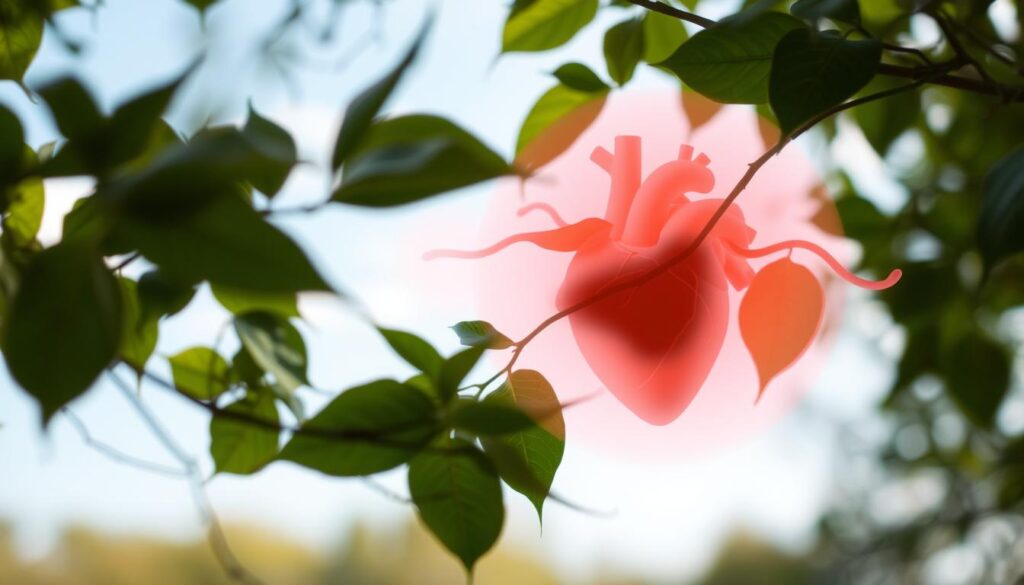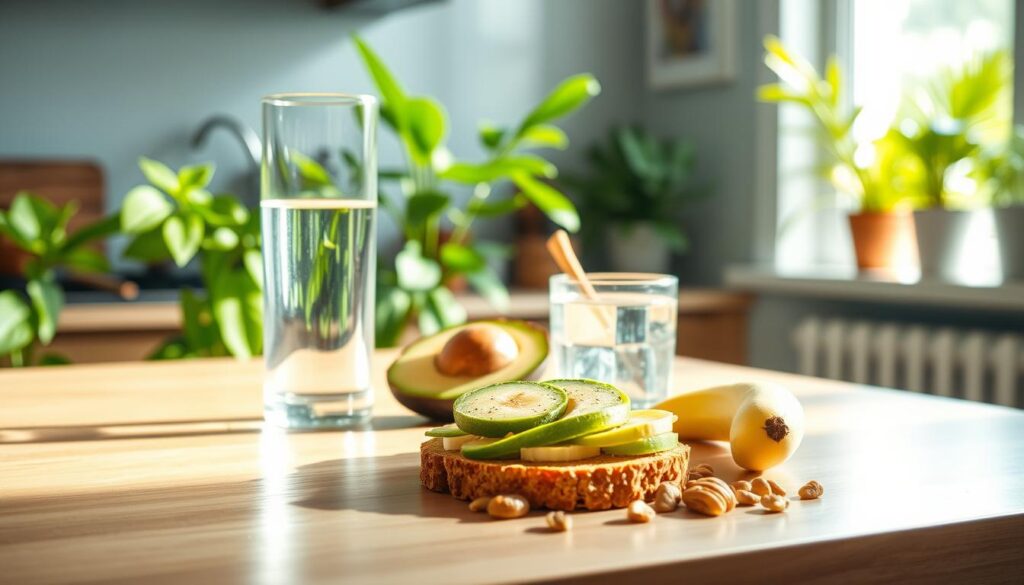Learn about hypotension symptoms, causes, and treatments. Discover when low blood pressure requires medical attention and effective ways to manage this condition naturally.

Key Takeaways
- Hypotension is a medical condition with low blood pressure, affecting many people.
- Knowing the signs like dizziness and fainting is key for early detection and prevention.
- This guide covers the different types of hypotension, their causes, and when to see a doctor.
- Understanding the link between dehydration and hypotension can help you manage your condition better.
- Making lifestyle changes and using natural remedies can help manage low blood pressure and its symptoms.
What is Hypotension: Definition and Medical Overview
Hypotension, or low blood pressure, is when your blood pressure is too low. This can cause your body’s tissues and organs to not get enough blood and oxygen. It’s a serious condition that needs attention.
Types of Low Blood Pressure Conditions
There are many types of hypotension, each with its own causes and symptoms. Here are a few:
- Orthostatic hypotension – a sudden drop in blood pressure when standing up from a sitting or lying position
- Postprandial hypotension – a decrease in blood pressure after eating a meal
- Neurally mediated hypotension – a reflex-driven drop in blood pressure, often triggered by prolonged standing or emotional stress
- Hypovolemic hypotension – a decrease in blood pressure due to a loss of fluid, such as through severe dehydration or bleeding
Normal vs. Low Blood Pressure Readings
Normal blood pressure is usually around 120/80 mmHg. Hypotension is when it’s below 90/60 mmHg. But, blood pressure can vary, and some people naturally have lower readings without health issues.
| Blood Pressure Reading | Classification |
|---|---|
| 120/80 mmHg | Normal |
| 90/60 mmHg or lower | Hypotension |
Knowing the different types of hypotension and what’s considered normal is key. It helps in recognizing and managing this condition well.
Common Causes of Low Blood Pressure
Hypotension, or low blood pressure, can stem from many sources. Knowing the main causes helps people spot warning signs early. This way, they can take steps to manage their condition.
Dehydration is a top reason for temporary low blood pressure. Without enough fluids, blood volume drops, leading to lower blood pressure. This can happen from sweating too much, vomiting, diarrhea, or not drinking enough water.
Some medical conditions also lead to chronic low blood pressure. For example, shock can be caused by severe bleeding, allergic reactions, or sepsis. Another condition, vasovagal syncope, causes a sudden drop in heart rate and blood pressure, leading to fainting.
Also, some medications can lower blood pressure as a side effect. This includes diuretics, antidepressants, and drugs for high blood pressure. It’s important for those taking these to watch their blood pressure closely. They should talk to their doctor if they notice any concerning symptoms.
“Recognizing the common causes of low blood pressure is the first step in managing this condition effectively.”
By knowing what can cause hypotension, people can better spot and handle potential triggers. This helps keep their blood pressure healthy.
Recognizing Early Warning Signs of Blood Pressure Drops
It’s important to watch for early signs of dizziness, fainting, and blood pressure drop. These can mean you need to see a doctor. They might show a health problem that needs help.
Physical Symptoms to Watch For
Feeling lightheaded, seeing things blur, or having a fast heartbeat can mean low blood pressure. You might also feel sick to your stomach, sweat a lot, or feel weak. Noticing these signs early can help catch hypotension before it gets worse.
When to Seek Medical Attention
If these signs don’t go away or get worse, you should get medical help. If you keep feeling dizzy or fainting, especially with chest pain or trouble breathing, see a doctor right away. Quick action can stop bigger problems and make you feel better.
Risk Factors and Triggers
- Certain medications, like diuretics and blood pressure-lowering drugs
- Dehydration or losing too much fluid
- Being in bed too long or changing positions suddenly
- Having health issues like diabetes or anemia
Knowing about risk factors and triggers helps manage blood pressure. It can also lower the chance of dizziness or fainting.
“Paying attention to early warning signs of low blood pressure can be the key to preventing more serious health issues.”
The Connection Between Dehydration and Hypotension
Keeping your body hydrated is key to healthy blood pressure. Dehydration can cause blood pressure to drop, leading to hypotension.
Dehydration happens when you lose more fluids than you take in. This can be due to sweating too much, having diarrhea, or not drinking enough water. When you lose fluids, your body has less blood. This means your blood pressure goes down.
Symptoms of dehydration-caused hypotension include:
- Dizziness or lightheadedness
- Fatigue and weakness
- Headaches
- Nausea or vomiting
- Rapid or irregular heartbeat
To avoid blood pressure drops from dehydration, drink plenty of water. Drink more when you’re active or in hot weather.

Staying hydrated can lower the risk of hypotension and its symptoms. If you have ongoing or severe blood pressure drops, see a doctor. They can find and treat the cause.
Understanding Orthostatic Hypotension
Orthostatic hypotension is a common condition. It happens when blood pressure drops suddenly when you stand up. This can cause dizziness, lightheadedness, and even fainting. Knowing how it works helps in preventing and managing these symptoms.
Postural Changes and Blood Pressure
When you stand up, gravity pulls blood to your legs. This reduces blood flow to your heart. Your body tries to fix this by increasing heart rate and tightening blood vessels. But for people with orthostatic hypotension, these fixes don’t work well enough.
Prevention Strategies
To stop dizzy spells and blood pressure drops, it’s important to tackle the root causes. Here are some ways to do it:
- Gradually rise from sitting or lying down to adjust to standing.
- Wear compression stockings to help blood flow back to the heart.
- Drink plenty of water and eat enough salt and fluids to keep blood volume up.
- Do regular exercise to boost your heart’s health.
- Avoid sudden position changes, especially after eating or in hot weather.
By understanding orthostatic hypotension and using these prevention strategies, you can reduce the risk of dizziness and other symptoms.
Medication-Induced Low Blood Pressure
Some medications can cause low blood pressure, or hypotension. It’s important to know how certain drugs can affect blood pressure. This knowledge helps in managing this condition well.
Here are some common medications that can lead to hypotension:
- Diuretics (water pills) used to treat high blood pressure
- Antidepressants, particularly older classes like tricyclics
- Erectile dysfunction drugs
- Parkinson’s disease medications
- Certain pain relievers and muscle relaxants
These drugs can make blood pressure drop. They affect how the body controls blood flow and keeps it circulating well. This can cause dizziness, lightheadedness, and fainting.
| Medication Category | Examples | Potential Impact on Blood Pressure |
|---|---|---|
| Diuretics | Hydrochlorothiazide, furosemide | Can lower blood pressure by reducing fluid volume |
| Antidepressants | Amitriptyline, imipramine | May cause hypotension by affecting blood vessel regulation |
| Erectile Dysfunction Drugs | Sildenafil, tadalafil | Dilate blood vessels, leading to temporary blood pressure drop |
People taking these medications need close monitoring, especially when starting a new one. Adjusting dosages or switching drugs might be needed to manage medication-induced hypotension. Drinking enough water and keeping electrolytes balanced can also help prevent dizziness and other symptoms.
Lifestyle Factors Affecting Blood Pressure Levels
Medical conditions can cause low blood pressure, but lifestyle also matters. Knowing how diet, nutrition, and exercise affect blood pressure is key. This knowledge helps manage hypotension, prevent dehydration, and improve heart health.
Diet and Nutrition Impact
Eating a balanced diet is vital for stable blood pressure. Here are some tips to help manage low blood pressure:
- Eat more hydrating foods like watermelon, cucumbers, and leafy greens.
- Make sure to get enough sodium, potassium, and magnesium to balance fluids and blood pressure.
- Reduce processed, high-sodium foods to avoid dehydration and worsen hypotension.
Exercise Considerations
Exercise is important for managing low blood pressure. But, those with hypotension need to be careful. Here are some guidelines:
- Begin with low-impact activities like walking, swimming, or gentle yoga to slowly raise your heart rate and improve blood flow.
- Avoid quick changes in position to prevent sudden drops in blood pressure, especially if you have orthostatic hypotension.
- Drink plenty of water before, during, and after working out to avoid dehydration and blood pressure changes.
By making these lifestyle changes, people with hypotension can actively manage their condition. This improves their heart health overall.
Natural Remedies for Managing Low Blood Pressure
Dealing with hypotension, or low blood pressure, can be tough. But, there are natural ways and lifestyle changes to help. These can ease symptoms like dizziness.
One good idea is to eat more salty foods. Foods like olives, pickles, or salted nuts can help. Just remember to check with your doctor if you need to watch your salt intake.
- Eating more salt can help raise your blood pressure.
- Wearing compression stockings or socks can also help keep your blood pressure stable by improving circulation.
- Slowly changing your posture, like getting up from sitting or lying down, can prevent sudden drops in blood pressure that might cause dizziness.
Drinking plenty of water, trying relaxation methods, and doing low-impact exercises can also help. Always talk to your doctor to find the best natural remedies for you. They will help you keep an eye on your condition.
“Making simple lifestyle changes can greatly help manage hypotension and improve your health.”
By trying these natural methods, people with low blood pressure can take control. They can live a healthier, more active life.
Medical Treatments and Interventions
For those with ongoing hypotension or sudden blood pressure drops, medical help is key. Doctors aim to quickly fix blood pressure and find the cause of shock or circulatory issues.
Prescription Medications
Healthcare providers often give medicines for hypotension. These include:
- Vasopressors: drugs that make blood vessels narrower and increase blood pressure
- Mineralocorticoids: hormones that help control fluid balance and blood pressure
- Fludrocortisone: a synthetic hormone for treating orthostatic hypotension
These medicines work in various ways to raise and keep blood pressure stable. They help reduce symptoms and prevent problems linked to low blood pressure.
Emergency Treatments
For severe, sudden hypotension or shock, quick medical action is needed. This might include:
- Intravenous (IV) fluid administration: Quickly adding fluids to restore blood volume and pressure
- Vasopressor medications: Giving drugs that make blood vessels narrower and boost blood flow
- Oxygen therapy: Adding extra oxygen to improve tissue oxygenation
- Monitoring and stabilization: Keeping a close eye on vital signs and providing supportive care
These emergency steps are made to quickly help those with dangerous blood pressure drops.
Knowing about these medical options helps both patients and doctors manage hypotension better. This improves health and well-being.
Prevention Strategies and Daily Management
Keeping low blood pressure healthy needs a mix of lifestyle changes and specific actions. There are many ways to prevent and manage hypotension every day.
Stay Hydrated
Drinking enough water is key to keeping blood pressure stable. Drink lots of water, especially when it’s hot or humid. Dehydration can lead to orthostatic hypotension.
Adjust Your Diet
Eating foods full of nutrients and electrolytes, like bananas and leafy greens, helps with blood pressure. Try to eat less processed food and alcohol, as they can make hypotension worse.
Exercise Carefully
Exercise is good for your heart and can help with blood pressure. But, people with low blood pressure should be careful. Avoid sudden movements or standing for too long to avoid orthostatic hypotension.
Use Compression Stockings
Wearing compression stockings can help keep blood pressure stable. They’re especially helpful for orthostatic hypotension.
Monitor and Manage Medications
Some medicines, like diuretics and blood pressure drugs, can cause hypotension. Talk to your doctor to find the right balance of medicines and avoid side effects.
| Prevention Strategies | Potential Benefits |
|---|---|
| Staying Hydrated | Maintains stable blood pressure levels |
| Adjusting Diet | Provides essential electrolytes and nutrients |
| Careful Exercise | Strengthens the cardiovascular system |
| Using Compression Stockings | Improves venous return and blood pressure control |
| Managing Medications | Minimizes side effects that can contribute to hypotension |
By using these strategies every day, people with low blood pressure can keep their blood pressure in check. This helps avoid serious problems.

Long-term Health Implications of Chronic Hypotension
Chronic low blood pressure, or hypotension, can have serious long-term health effects. When blood pressure drops too low, it can cause hypoperfusion. This is when vital organs and tissues don’t get enough blood and oxygen.
Chronic hypotension raises the risk of organ damage and dysfunction. Prolonged hypoperfusion can harm the heart, brain, kidneys, and other critical systems. This can lead to serious complications, such as:
- Impaired cognitive function and memory issues
- Increased risk of stroke and heart disease
- Kidney damage and reduced renal function
- Digestive problems and decreased nutrient absorption
It’s crucial to monitor and manage hypotension regularly. People with chronic low blood pressure should work with their healthcare providers. They need to develop a treatment plan that includes lifestyle changes, medication, or other interventions. This helps keep blood pressure levels optimal and ensures vital organs get enough blood.
By understanding the risks of untreated hypotension and taking action, individuals can protect their long-term health and well-being.
Conclusion
This article has given a detailed look at hypotension, or low blood pressure. We’ve covered what it is, its types, causes, and signs. We also talked about how dehydration and certain medications can affect it.
We looked at how lifestyle choices and natural remedies can help. We also discussed medical treatments for it.
Managing hypotension is key because it can cause dizziness and fainting. These are serious issues if not treated. By knowing the signs of low blood pressure, you can keep your heart healthy.
Understanding your blood pressure and getting medical help when needed is vital. It’s better to act early than wait for a crisis. By following the advice in this article, you can manage your hypotension and live a healthier life.
FAQ
Q: What is hypotension?
A: Hypotension is when your blood pressure is too low. It happens when the top number is under 90 mmHg or the bottom number is under 60 mmHg. This can make you feel dizzy, lightheaded, or even faint.
Q: What are the main types of low blood pressure conditions?
A: There are a few main types of low blood pressure. Orthostatic hypotension is when blood pressure drops suddenly when you stand up. Postprandial hypotension happens after eating. Neurally mediated hypotension is caused by changes in your body or surroundings.
Q: How do normal and low blood pressure readings differ?
A: Normal blood pressure is when the top number is under 120 mmHg and the bottom number is under 80 mmHg. Low blood pressure is when the top number is under 90 mmHg or the bottom number is under 60 mmHg.
Q: What are the common causes of hypotension?
A: Hypotension can be caused by many things. Dehydration, some medicines, and medical conditions like shock or adrenal insufficiency can cause it. Vasovagal syncope, or fainting, is another cause.
Q: What are the early warning signs of blood pressure drops?
A: Signs of low blood pressure include feeling dizzy, lightheaded, or seeing things blurry. You might also feel nauseous, tired, or faint. If these symptoms last or get worse, see a doctor.
Q: How is dehydration connected to hypotension?
A: Dehydration can lower your blood pressure. It does this by reducing the amount of fluid in your blood. This can make your blood flow less and your blood pressure drop.
Q: What is orthostatic hypotension, and how can it be prevented?
A: Orthostatic hypotension is when your blood pressure drops suddenly when you stand up. To prevent it, wear compression stockings, drink plenty of water, and change positions slowly.
Q: Can medications cause low blood pressure?
A: Yes, some medicines can lower your blood pressure too much. This includes blood pressure medicines, diuretics, and antidepressants. Always talk to your doctor about any side effects.
Q: How can lifestyle factors affect blood pressure levels?
A: Your diet, nutrition, and exercise can affect your blood pressure. Eating well and staying active can help keep your blood pressure stable.
Q: What natural remedies can help manage low blood pressure?
A: To manage low blood pressure, try increasing your salt intake. Wear compression stockings and make slow changes in position. These can help prevent dizziness and fainting.
Q: What medical treatments are available for low blood pressure?
A: Doctors may prescribe medicines to raise your blood pressure. In severe cases, they might give you IV fluids or medicines to stabilize your blood pressure.
Q: How can chronic hypotension affect long-term health?
A: Chronic low blood pressure can harm your health over time. It can reduce blood flow to important organs, increase the risk of organ damage, and make you more likely to have serious problems like shock.
